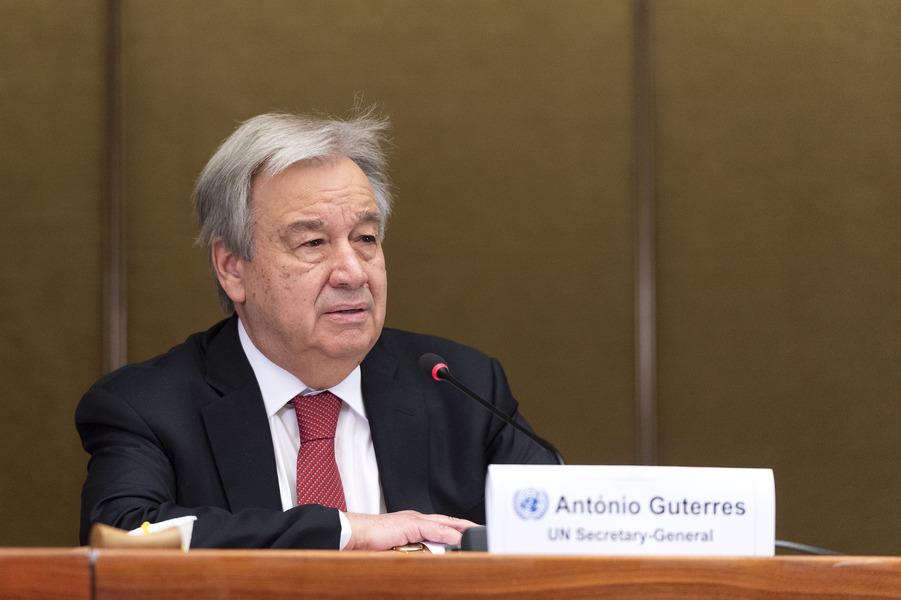Taking the CIA Out of Drone Strikes? The Obama Administration's Yemen Experience
Washington Post national security reporter Greg Miller has an excellent story in Sunday's paper on the operational role of the CIA in drone warfare. Back at the time of the Brennan confirmation hearings, and even before, there had been discussion that the CIA would be pulled - even if only gradually - out of drone warfare and this form of using lethal force would be turned over the military.
Published by The Lawfare Institute
in Cooperation With

Washington Post national security reporter Greg Miller has an excellent story in Sunday's paper on the operational role of the CIA in drone warfare. Back at the time of the Brennan confirmation hearings, and even before, there had been discussion that the CIA would be pulled - even if only gradually - out of drone warfare and this form of using lethal force would be turned over the military. The CIA would re-focus itself on intelligence gathering and analysis, which many commentators inside and outside government said had taken a backseat to operational roles. Brennan himself urged this re-configuring of CIA priorities - including a shift away from counterterrorism to re-emphasize other intelligence missions; and the administration has said similar things in recent weeks.
Focusing on drone warfare in Yemen, however, Miller's report suggests this is easier said than done - whether in Yemen (or, it might be added, in Pakistan). A fundamental reason seems to be something noted many times here at Lawfare - the firing of a missile from a drone is the last kinetic step in a long chain of intelligence-gathering that includes surveillance over time from drones, signals intelligence and, crucially, on-ground human intelligence networks that give the US reason to be focusing on certain people as possible targets. Whether in Pakistan or Yemen, the effectiveness of drone warfare has been a function of the quality of the front-end intelligence that finally might lead to a strike. The drone's contribution to the intelligence is far from being entirely tactical, of course - the drone's surveillance has far more utility than just the preparation of a strike and that surveillance is crucial for reducing collateral harm from the strike itself. But drones are not quite so useful if one has no prior idea who one is searching for or where he might be or even why him - and much of this intelligence is gathered at the front end of the process in reliance on human intelligence networks.
Although in principle the functions of intelligence gathering at the front end might be separated out from the intelligence involved in the preparation of a strike and from the actual strike itself, with the CIA engaged in the intelligence side and the military serving as the trigger pullers, the experience in Yemen raises some cautions about how easy it is to create this division of labor.
Four years ago, as a new al-Qaeda affiliate in Yemen was proving itself a potent adversary, the Obama administration made plans to attack it with airstrikes just as the United States had been doing to the terrorist network’s core in Pakistan. But this time, the White House decided there would be a key difference: The strikes in Yemen would be carried out by the U.S. military, not the CIA. Two years later, in mid-2011, a mysterious construction project began to emerge in the Saudi desert, an elongated compound with a ribbon of concrete running parallel to the ridgelines of the surrounding dunes. CIA drones were about to enter the skies over Yemen after all. The change was driven by a number of factors, including errant strikes that killed the wrong people, the use of munitions that left shrapnel with U.S. military markings scattered about target sites and worries that Yemen’s unstable leader might kick the Pentagon’s planes out. But President Obama’s decision also came down to a determination that the CIA was simply better than the Defense Department at locating and killing al-Qaeda operatives with armed drones, according to current and former U.S. officials involved in the deliberations. Even now, as the president plans to shift most drone operations back to the military, many U.S. counterterrorism officials are convinced that gap in capabilities has not been erased.The WaPo story quotes an official saying that Yemen is an exception, not the rule - the result of its special circumstances, and with the official "making clear that the administration regarded the CIA campaign as an anomaly and saw lethal operations as the province of the military." I am not so sure that Yemen is so completely an anomaly, at least given how important CIA intelligence networks in Pakistan have proved to be in making targeting effective. Over time, and particularly in the case of both a convergence and division of labor between the CIA and JSOC to divide intelligence networks and lethal operations, I imagine that any deficits could be overcome. But in any case, as of now, a figure as important as Sen. Diane Feinstein - chairman of the Senate Intelligence Committee - has raised caution about the military taking over for the CIA in Yemen, saying that "she had seen the CIA 'exercise patience and discretion specifically to prevent collateral damage' and that she 'would really have to be convinced that the military would carry it out that well'.” (I discuss some of these issues in my new Commentary essay, The Case for Drones.)
Kenneth Anderson is a professor at Washington College of Law, American University; a visiting fellow of the Hoover Institution; and a non-resident senior fellow of the Brookings Institution. He writes on international law, the laws of war, weapons and technology, and national security; his most recent book, with Benjamin Wittes, is "Speaking the Law: The Obama Administration's Addresses on National Security Law."




-(1).png?sfvrsn=7aa9b087_9)
